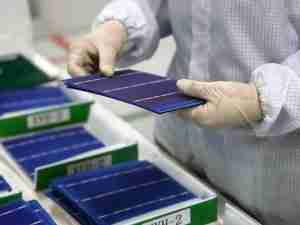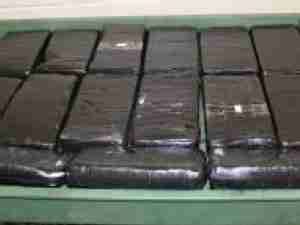Puerto Ricans Drive Around for Phone Signals a Week After Storm
By: | Sep 27 2017 at 06:13 PM | International Trade
Wireless carriers in Puerto Rico and the U.S. Virgin Islands are still struggling to get repairs underway and restore service a week after Hurricane Maria tore through the Caribbean, hampered by supply shortages, closed roads and widespread power failures.
Some residents could be seen parked along highways trying to take advantage of rare pockets of cell service. People also tried to contact relatives for news by calling into AM radio stations that stayed on the air after the storm. Most of the island’s residents have no way of reaching each other or relatives in states with major Puerto Rican populations, like New York and Florida.
With Maria compounding the damage left by Hurricane Irma, almost all landline phone and cable service in Puerto Rico remains down, according to a report from the U.S. Federal Communications Commission. Fewer than 10 percent of the island’s cell sites were working, while about 39 percent were up and running in the Virgin Islands.
In Texas, by comparison, just 4.7 percent of cell sites in the southern portion of the state were down in the days after Hurricane Harvey. In Florida’s disaster areas, just 27 percent of towers were shut down by Hurricane Irma.
“The situation in Puerto Rico continues to be extremely challenging,” said Stacey DiNuzzo, a spokeswoman for T-Mobile US Inc. “All the wireless carriers are working together and sharing resources to get people back online as quickly as possible, but it’s a long road ahead.”
Grim Conditions
The communications blackout added to the grim conditions Puerto Ricans faced in the aftermath of the storm, including shortages of drinking water, a lack of diesel fuel to power hospitals and limited food. Many survivors and others needing aid, along with concerned friends and family, are cut off from each other with little hope of reconnecting soon.
Jose Luis Falero, 40, an officer with the New York Police Department, joined an emergency response team partly to check on his father, Joaquin, 79.
“My sister was the most frantic of all,” the younger Falero said. “She said, ‘If you go, find him.” The elder Falero, for his part, was ecstatic to reunite with his son in front of his home on a hilly Rio Piedras street in San Juan, but was nonchalant about having weathered the storm. The reunion was coordinated by Mayor Carmen Yulin Cruz, who attended with press in tow.
Power outages have been the biggest cause of communications service failure. Getting the necessary heavy equipment to the island to make repairs hasn’t been easy as the Federal Emergency Management Agency gives priority to shipments of food, medicine and water.
Adding to the challenges is the difficult terrain and the high level of turmoil and desperation in Puerto Rico, especially after the 7 p.m. curfew. Companies have been hesitant to put staff in dangerous situations.
Cell-Site Vandals
Sandra Torres, president of Puerto Rico’s Telecommunications Regulatory Board, called out looters and vandals who are hampering the repair effort, according to a report in Primera Hora. She was responding to reports of thieves taking fuel and generators from cell sites.
The extent of the damage makes the recovery difficult, said Jose Otero, a wireless industry expert and the director of Latin America and the Caribbean for 5G Americas. He cited landslides, broken bridges and impassable roads as some of the “many complex problems.”
Otero said carriers are coordinating efforts to hasten repairs. Government efforts haven’t been so well orchestrated, he said.
“They’re trying to fix everything as it happens,” Otero said.
AT&T Inc. has sent barges and cargo planes with equipment, said Jeff Kobs, a spokesman. Without power, crews have been trying to move portable generators to cell sites to restore service. The company also says it is sending network experts and technicians to work with government officials. Verizon Communications Inc., which left the Puerto Rican phone business 10 years ago, pledged $1 million for hurricane relief.
The carriers are sharing “everything—engineers, generators, even shipments of bottled water. Anything we can to help the people get back on their feet,” T-Mobile’s DiNuzzo said.
Sprint Hit
Sprint Corp. appears to be the hardest hit of the carriers serving the island, with customers in San Juan reporting they are unable to make calls. Connections with America Movil SAB’s Claro Puerto Rico and AT&T were spotty in parts of the capital. Sprint’s first shipment of workers, generators and network equipment arrived Monday and additional shipments and staff were due to arrive soon, said Lisa Belot, a spokeswoman.
Claro provides landline and wireless service, and company President Enrique Ortiz de Montellanos said in a radio interview this week that the western side of the island held up better. He estimated that 55 percent of customers had landline phone and internet service.
T-Mobile and AT&T have created websites to help people get in contact with family and friends that they haven’t heard from. The sites let you enter your phone number, email address and the number of the person you are seeking. When that person connects to the network they are sent your info and told you are trying to reach them.








